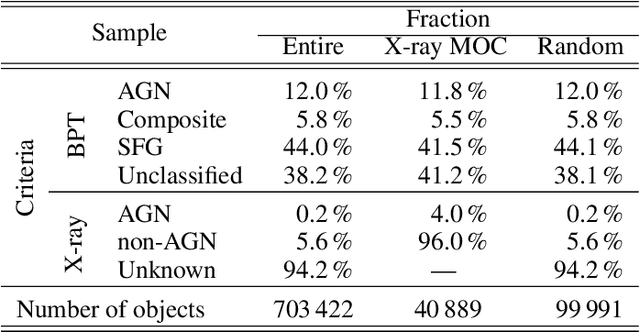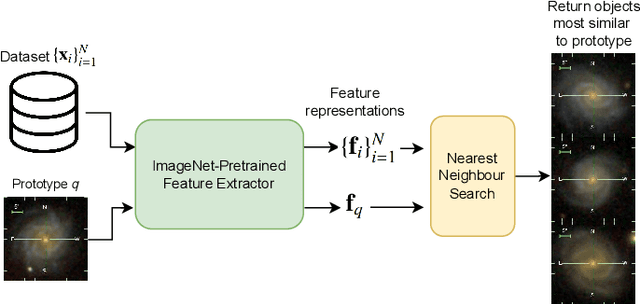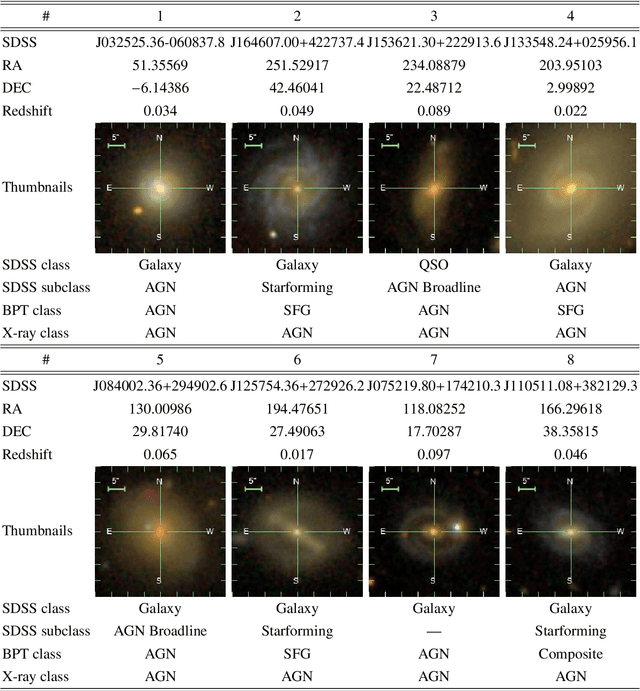ULISSE: A Tool for One-shot Sky Exploration and its Application to Active Galactic Nuclei Detection
Paper and Code
Aug 23, 2022



Modern sky surveys are producing ever larger amounts of observational data, which makes the application of classical approaches for the classification and analysis of objects challenging and time-consuming. However, this issue may be significantly mitigated by the application of automatic machine and deep learning methods. We propose ULISSE, a new deep learning tool that, starting from a single prototype object, is capable of identifying objects sharing the same morphological and photometric properties, and hence of creating a list of candidate sosia. In this work, we focus on applying our method to the detection of AGN candidates in a Sloan Digital Sky Survey galaxy sample, since the identification and classification of Active Galactic Nuclei (AGN) in the optical band still remains a challenging task in extragalactic astronomy. Intended for the initial exploration of large sky surveys, ULISSE directly uses features extracted from the ImageNet dataset to perform a similarity search. The method is capable of rapidly identifying a list of candidates, starting from only a single image of a given prototype, without the need for any time-consuming neural network training. Our experiments show ULISSE is able to identify AGN candidates based on a combination of host galaxy morphology, color and the presence of a central nuclear source, with a retrieval efficiency ranging from 21% to 65% (including composite sources) depending on the prototype, where the random guess baseline is 12%. We find ULISSE to be most effective in retrieving AGN in early-type host galaxies, as opposed to prototypes with spiral- or late-type properties. Based on the results described in this work, ULISSE can be a promising tool for selecting different types of astrophysical objects in current and future wide-field surveys (e.g. Euclid, LSST etc.) that target millions of sources every single night.
 Add to Chrome
Add to Chrome Add to Firefox
Add to Firefox Add to Edge
Add to Edge